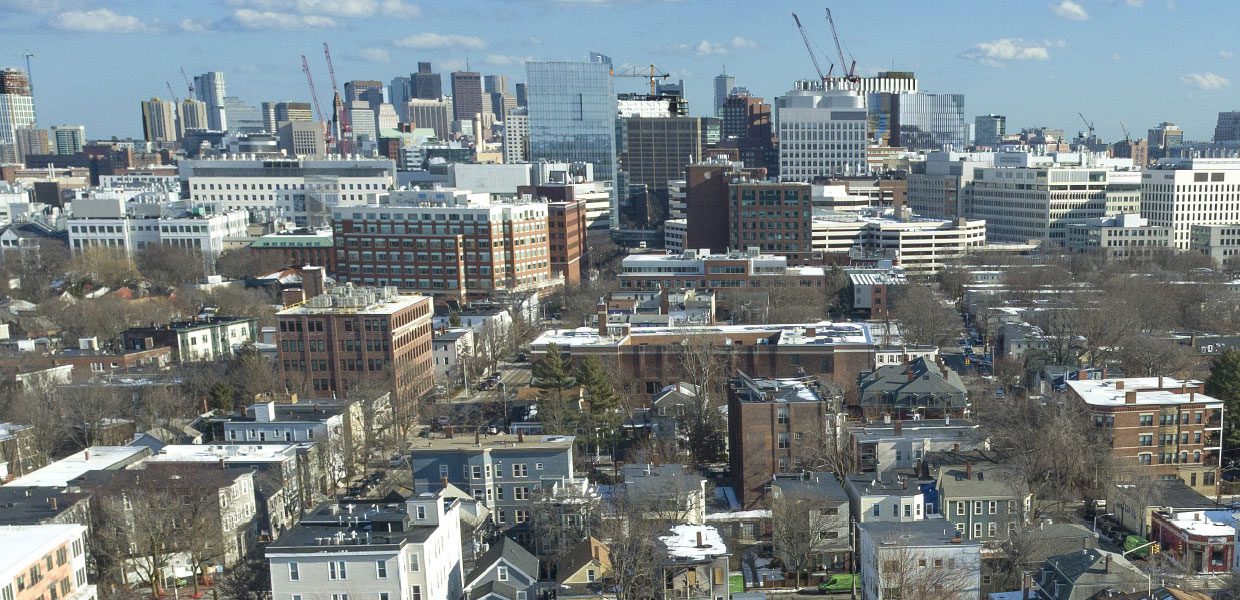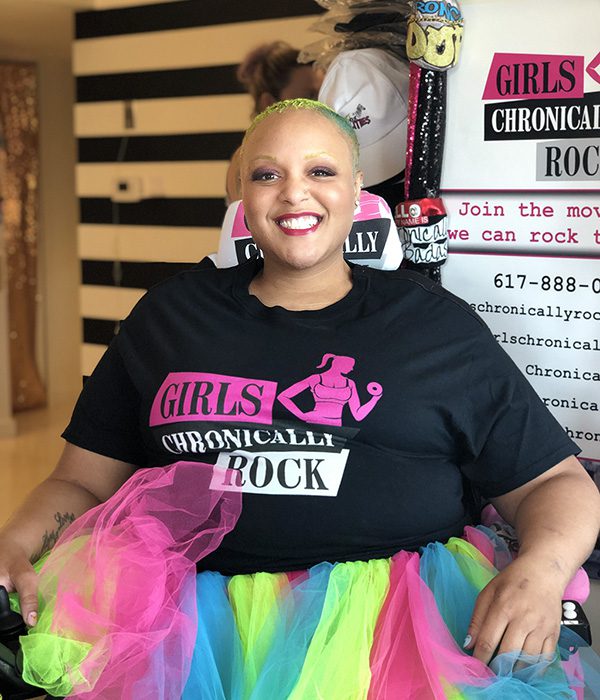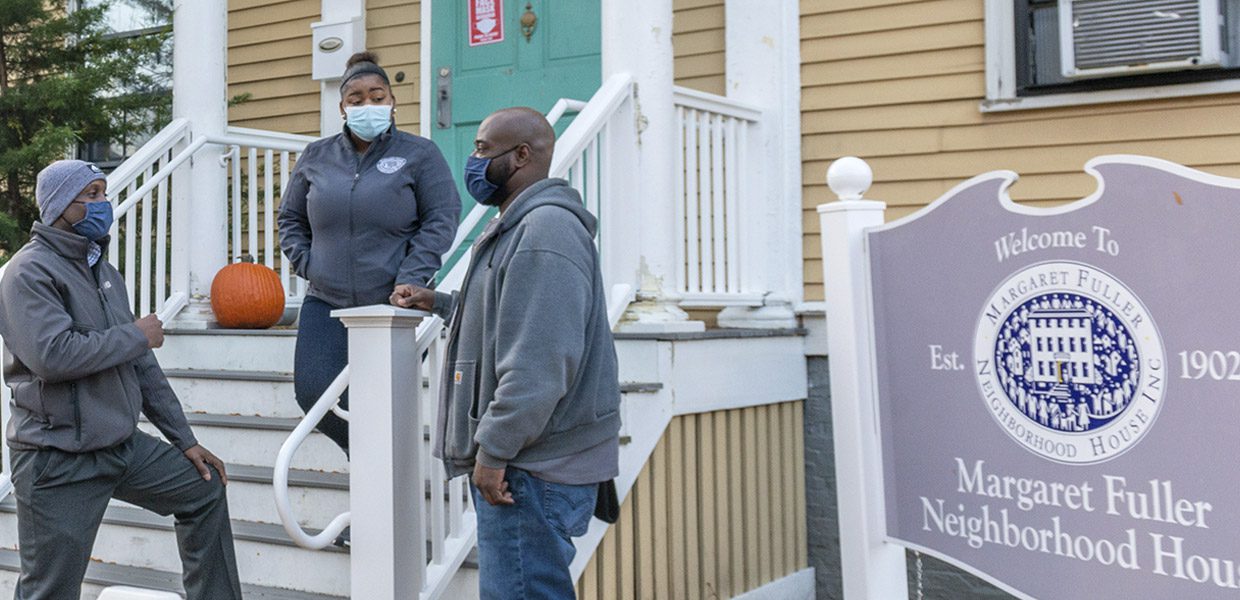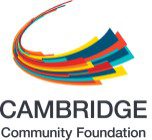Equity and Innovation Report
Chapter 2: A Dynamic Decade
Growth, inequality, and the ‘new Cambridge’
Cambridge has experienced a boom in young knowledge workers moving in. Photo by Lou Jones.
Cambridge has experienced a boom in young knowledge workers moving in. Photo by Lou Jones.
Cambridge is a remarkable place. It has about 1 percent of the population of New York City, and is about 13 percent of the size of Boston, yet it clearly outperforms its size in nearly every measure of innovation. Its past economies rested on such fragile foundations as the manufacture of candy and cut glass. It experienced the urban blues of so many older cities in the 20th century, steadily losing population as the decades wore on. For many years it seemed that without Harvard and MIT, Cambridge would not have been much of a draw for people. That was then.


increase in median household income since 2010

bachelor’s degree or higher in 2018

income gap between Black and all Cambridge households
Today, words like “powerhouse” hardly manage to describe the place. In a bold step in the 1970s, Cambridge became the first municipality to regulate recombinant DNA research — highly controversial at the time — thus providing a stable environment for then-start-up Biogen to site a DNA lab in the city. The move, supported by a committee of Cambridge citizens, sowed the seeds for Kendall Square, which by 2009 would be called “the most innovative square mile on earth” by the global management consulting firm Boston Consulting Group.1 The Cambridge of today is fueling innovations in technology that touch every aspect of our lives and will continue to define us long into the future.
Of course, innovation has always been an integral part of Cambridge’s identity. For nearly 400 years, the city has acted as a breeding ground for creative thinkers whose ideas and inventions have helped to change the world. The lockstitch sewing machine, the moon landing, the World Wide Web and social networking, lifesaving medical treatments, and Tony Award–winning artistic productions — all these and more have their roots in a city that is just over six square miles in size.
But today’s Cambridge is being rapidly shaped by an innovation economy that has exploded in just the past decade or so.
A Shifting Economy
The innovation economy — high tech, biotech, engineering, and life sciences — has overtaken higher education as the leading employer. Among Cambridge’s top 25 largest employers — which provide nearly half of all jobs in the city — employment in the innovation cluster has more than doubled, from just over 11,000 jobs in 2010 to more than 25,000 in 2019. The innovation economy has now overtaken higher education as the top employment sector.
Employment in scientific research and development has grown by nearly 80 percent over the decade and now accounts for a fifth of jobs citywide and one in 10 business establishments. Businesses in non-innovation sectors have benefited as well. After stagnating somewhat in the 1990s and early 2000s, Cambridge’s business growth had been on an upward trajectory prior to COVID-19, with the total number of businesses in the city growing by nearly 20 percent in less than 10 years.
Chart 2.1: Top 25 Employers: Total Jobs by Sector, 1995–2019
25,000 innovation jobs among top employers.
Chart 2.2: Average Monthly Employment in Scientific R&D, 2001–2019
28,772: Average monthly employment in R&D.
Chart 2.3: Total Business Establishments, 1990–2019
Prior to COVID-19, Cambridge added over 1,000 new businesses in the past decade.

Kendall Square rises among the diverse neighborhoods it borders. Photo by Greig Cranna.
Wages
By 2019, overall Cambridge wages topped $18 billion, up 55 percent over the past decade. The booming job market of the past decade also translated into wage gains for those who work in Cambridge. After being hit hard by the dot-com crash in the early 2000s and the 2008 Great Recession, workers’ paychecks finally experienced strong growth in the past decade. Since 2010, total wages increased by 39 percent, while the average weekly wage increased by 15.5 percent when adjusted for inflation.
Between 2001 and 2019, wages from jobs in scientific R&D nearly quadrupled, growing from just over 9 percent of earned wages in 2001 to 32 percent in 2019.
Chart 2.4: Average Weekly Wage for Jobs in Cambridge, 2001-2019 (inflation-adjusted)
$2,550: Average weekly wage in 2019 (all jobs).
Chart 2.5: Aggregate Wages from All Industries and Scientific R&D, 2001–2019
Cambridge jobs generated over $18 billion in 2019.

Keisha Greaves. Photo courtesy of Keisha Greaves.
“Cambridge tries to make things easier for people with special needs, so everyone can get around and do their own thing. And someone like myself, living with muscular dystrophy, I love that we have so many biotech companies here.”
— Keisha Greaves, Local Business Owner
Capital Investment
The Cambridge innovation economy has resulted in vast amounts of wealth within industry and for shareholders. Since 2000, Cambridge-based IPOs have generated more than $8 billion at launch, with 20 percent of that amassed in 2018 alone.
Three of the nation’s top 20 ZIP codes for total venture capital funding are located in Cambridge. Cambridge is a leader when it comes to venture capital funding as well. According to data analyzed by the University of Toronto’s Martin Prosperity Institute, three of the top 20 ZIP codes in the United States for VC support are located in Cambridge, and the city leads other areas of Massachusetts significantly in total investment funding.
Chart 2.6: Median Household Income, 2000–2018 (inflation-adjusted)
28% increase in median household income since 2010.
Chart 2.7: Total Population, 1950–2018
118,977 total population.
Rising Incomes
Cambridge has outpaced income growth statewide. Cambridge residents and households also experienced unprecedented prosperity over the past decade. As of 2018, the median annual household income crested above $95,000 — a nearly 28 percent increase since 2010 when adjusted for inflation. This growth in Cambridge is in striking comparison to income trends statewide, which have remained relatively flat. Two decades ago, median household income in Cambridge was 6.5 percent lower than the statewide average, while in 2018 the median annual income was 23 percent higher than the statewide median.
Chart 2.8: Value of Cambridge-based IPOs, 2001–2018
Cambridge-based IPOs have generated more than $8 billion at launch since 2001.
Rising Home Values
For Cambridge homeowners, innovation-led growth has contributed to a pronounced increase in housing values. As of fiscal year 2020, the combined assessed value of residential property in Cambridge was more than $32 billion, an 85 percent increase since 2010. This rapid rise in home values reflects a large and growing source of wealth for Cambridge homeowners.
Chart 2.9: Aggregate Cambridge Property Values, FY1990–FY2020
Cambridge’s total residential property values surpassed $32 billion in fiscal year 2020.
A Different City
The “new Cambridge” is younger, more highly educated, more mobile, and more diverse.
The implications of the recent, rapid growth of Cambridge’s innovation sector extend well beyond start-ups, IPOs, and the overall composition of the economy. They can be seen and felt in neighborhoods and on sidewalks, in the new buildings and store-fronts, and in the changing lives and livelihoods of those who call Cambridge home. The resulting “new Cambridge” is younger, more highly educated, more mobile, and more diverse.
Beyond the economy, the city’s broad-based growth is attracting more people. Cambridge’s population has been experiencing a level of growth unprecedented in 40 years. Following decades of population loss and stagnation through the end of the 20th century, the total number of residents has increased by more than 13 percent since 2010. The city is nearing its 1950 population peak of 120,000.
Cambridge has become a city of young knowledge workers. Since 2010 almost all of Cambridge’s population growth has been driven by the college-age and millennial workforce (ages 18 to 24 and 25 to 34, respectively). Combined, these groups grew from 42 percent to nearly half of the total population.
High educational attainment is now almost a prerequisite for living in Cambridge. An astounding 81 percent of adults have at least a bachelor’s degree, up from 73 percent in 2010. More than half now have at least a master’s degree.
The residents of Cambridge today are less likely to be homegrown. Just 27 percent of current residents are Massachusetts natives, down from almost a third in 2010. Of current residents, 41.5 percent were born in another state or territory, while an additional 31.7 percent hail from another country. Much of this regional diversity speaks to the draw of Cambridge’s world-class universities — roughly a third of residents born outside of Massachusetts are undergraduate or graduate students, a rate that has remained constant over the decade.
Cambridge has become more diverse in terms of race and ethnicity, but with almost no growth in the Black population, whose relative share has declined. More than 66 percent of residents identify as white, nearly unchanged from 2010. Much of the increase in diversity has come from a growing Asian population, which has gone from 15 percent to 18.6 percent, and Latinx population, up from 7.6 percent to 11.4 percent. At the same time, the Black population numbers have remained virtually flat; as a result, the group now comprises less than 10 percent of the total population.
Chart 2.10: Population by Age, 2010 and 2018
Nearly half of Cambridge residents are 18 to 34 years old.
Chart 2.11: Educational Attainment for Adults 25 and Older, 1980–2018
81% held a bachelor’s degree or higher in 2018.
Chart 2.12: Population by Place of Birth, 2010 and 2018
Nearly one-third of Cambridge residents were born in another country.
Chart 2.13: Population by Race/Ethnicity, 1980–2018
42% residents of color in 2018.
(Note: In this chart, race and ethnicity are presented as separate categories. Figures add up to more than 100 percent due to overlap in racial categories and Latinx ethnicity.)
“Gentrification is real. The Port was a mostly black and latino neighborhood, but all of my friends are being pushed out. Lifelong friends. It hurts.”
— Elon Fyfield, Professional Recording Artist
Growing Inequality
The hollowing-out of middle- and low-income households has continued. From 2010 to 2018 the share of households earning less than $50,000 declined from more than 40 percent to just over 26 percent, while those earning $50,000 to $99,999 — roughly middle-income in Cambridge — fell from 26 percent to 20 percent of households. By contrast, the share of households earning over $200,000 more than doubled.
Economic benefits went primarily to the wealthy. For some, the general upswing that was in progress when the 2008 recession hit continued after it ended. Nationwide, the benefits of the recovering economy went primarily to the wealthy, while the fortunes of the rest of the population generally declined or remained the same. Cambridge’s economy showed remarkable resilience, but many of the problems that surfaced during the recession carried on. The slump presented an opportunity to begin again and reverse the trend toward increasing income and racial inequality, but instead, the disparities actually worsened.
One of the questions we face as a city is whether, given another opportunity to look at our essential issues and take action to reset the future, we will do so with success. Or, will a city with both increasing wealth and increasing poverty continue its trajectory toward even greater inequality?
Chart 2.14: Cambridge Households by Income, 2010 and 2018
21.4% of households earn more than $200,000.
Chart 2.15: Median Household Income by Race/Ethnicity, 2010 and 2018
$62,000: income gap between Black and all Cambridge households.

Cherryann Goodridge. Photo courtesy of Cherryann Goodridge.
“I feel like there’s no real support for the middle class — people like me who are stuck in this no-man’s land where we can’t afford a lot of things but our income is too high to qualify for programs. We’re not very good at recognizing the people who are in the middle.”
— CherryAnn Goodridge, Digital Marketing Professional

The Margaret Fuller Neighborhood House, one of four settlement houses in Cambridge, helps families meet their needs. Photo by Lou Jones.
We have adjusted the standard naming conventions established by the U.S. Census Bureau in the following ways: “Hispanic/Latino” ethnicity is referred to as “Latinx”; “Black” refers to “Black/African American”; “Asian” includes “Native Hawaiian/Pacific Islander”; “Multiracial” refers to “Two or More”; and “Another race/AIAN” includes “Some Other” and American Indian/Alaska Native.” For more about our terminology on race and ethnicity »
Footnote
